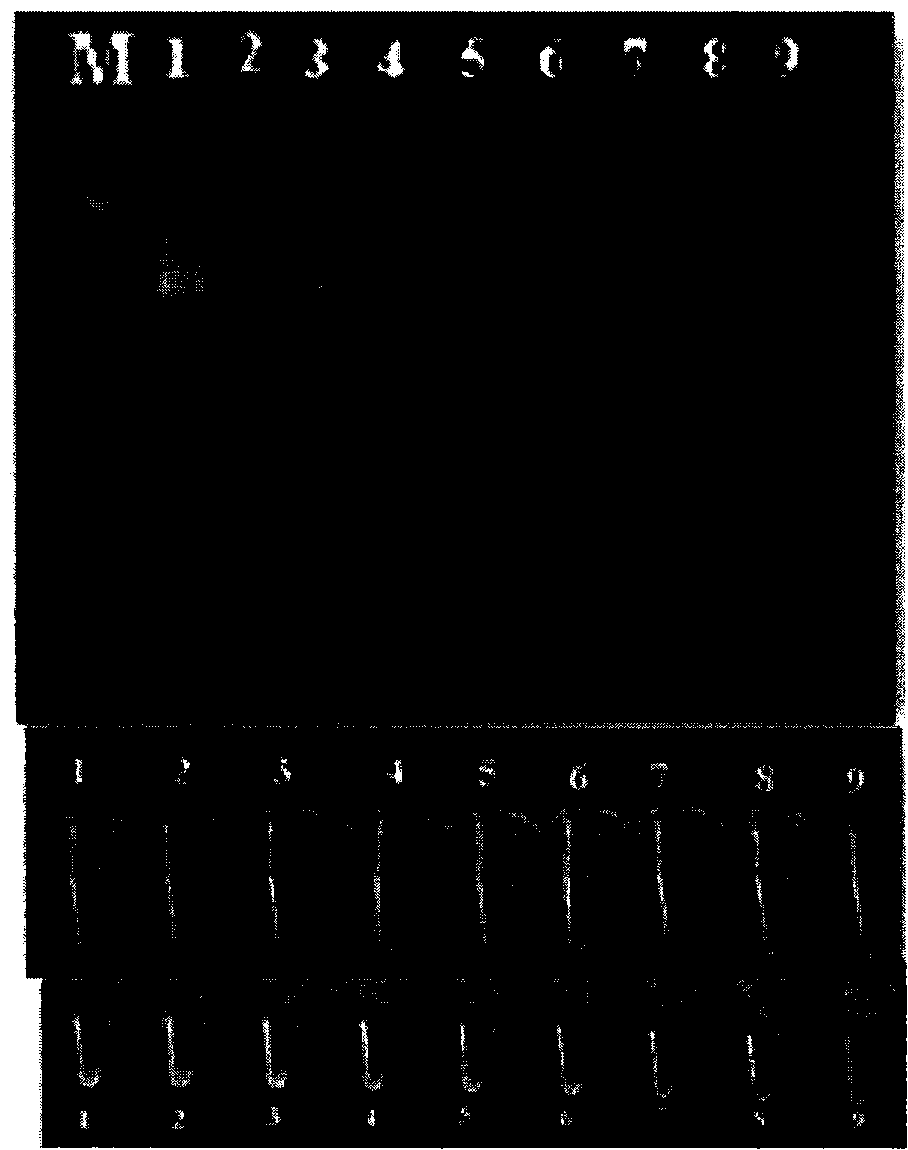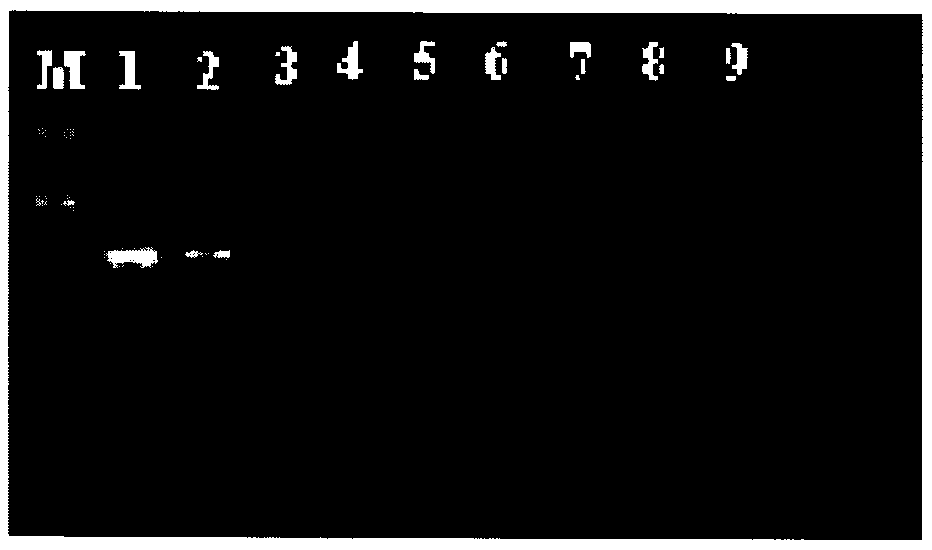Molecular detection method for rapid detection of Ile-1781-Leu mutation of anti-fenoxaprop-P-ethyl Beckmannia syzigachne
A technology of molecular detection and lingeria, which is applied in the field of agricultural science to reduce environmental pollution, reduce the probability of false positives, and improve accuracy
- Summary
- Abstract
- Description
- Claims
- Application Information
AI Technical Summary
Problems solved by technology
Method used
Image
Examples
Embodiment 1
[0033] Example 1 Optimization of LAMP reaction system
[0034] In order to save the detection cost and ensure the stability and reliability of the detection method, the experiment has 2 The concentration (2~6mM), dNTP concentration (0.2~1mM), F3, B3 concentration (0.1~0.8μM), FIP, BIP concentration (0.4~1.2μM) and betaine concentration (0~1.6M) are optimized, The optimal reaction system was determined as follows: Bst DNA polymerase (8U / μL) 0.4μL, 10×ThermoPol1μL, MgCl2 (25mM) 1.8μL, dNTP (10mM) 0.8μL, FIP (20μM) 0.4μL, BIP (20μM) 0.4 μL, F3 (10 μM) 0.6 μL, B3 (10 μM) 0.6 μL, betaine (5M) 1.6 μL, genomic DNA 1.0 μL, dH2O (sterilized distilled water) 1.4 μL.
Embodiment 2
[0035] Example 2 Optimization of LAMP reaction conditions
[0036] In order to obtain the most suitable reaction temperature and time and ensure the efficiency of the detection method, the experiment optimized the reaction temperature (61-65℃) and time (20-100min) in the reaction parameters, and finally determined the most suitable reaction temperature And time were 65℃ and 60min.
Embodiment 3
[0037] Example 3 LAMP reaction sensitivity detection
[0038] In order to determine the lower limit of detection of the LAMP reaction, in this experiment, the genomic DNA extracted and purified by the kit was used as a template in a 10-fold dilution. Using the above-mentioned diluted genomic DNA as a template, LAMP and PCR amplification were performed respectively. figure 2 with image 3 It can be seen that the lowest detection limit of LAMP technology is 5×10 -4 ng / μL, while the lower limit of ordinary PCR detection is only 5×10 -1 ng / μL.
[0039] The detection method established by the present invention can accurately and quickly detect the sperm-resistant fenoxaprop-p-ethyl containing the Ile-1781-Leu mutation, and provides a simple, fast and low-cost method for scientific research and production practice. The detection technology also provides a theoretical basis and technical guidance for the early warning and rational use of the resistant weeds, and has practical and far-re...
PUM
 Login to View More
Login to View More Abstract
Description
Claims
Application Information
 Login to View More
Login to View More - R&D
- Intellectual Property
- Life Sciences
- Materials
- Tech Scout
- Unparalleled Data Quality
- Higher Quality Content
- 60% Fewer Hallucinations
Browse by: Latest US Patents, China's latest patents, Technical Efficacy Thesaurus, Application Domain, Technology Topic, Popular Technical Reports.
© 2025 PatSnap. All rights reserved.Legal|Privacy policy|Modern Slavery Act Transparency Statement|Sitemap|About US| Contact US: help@patsnap.com



